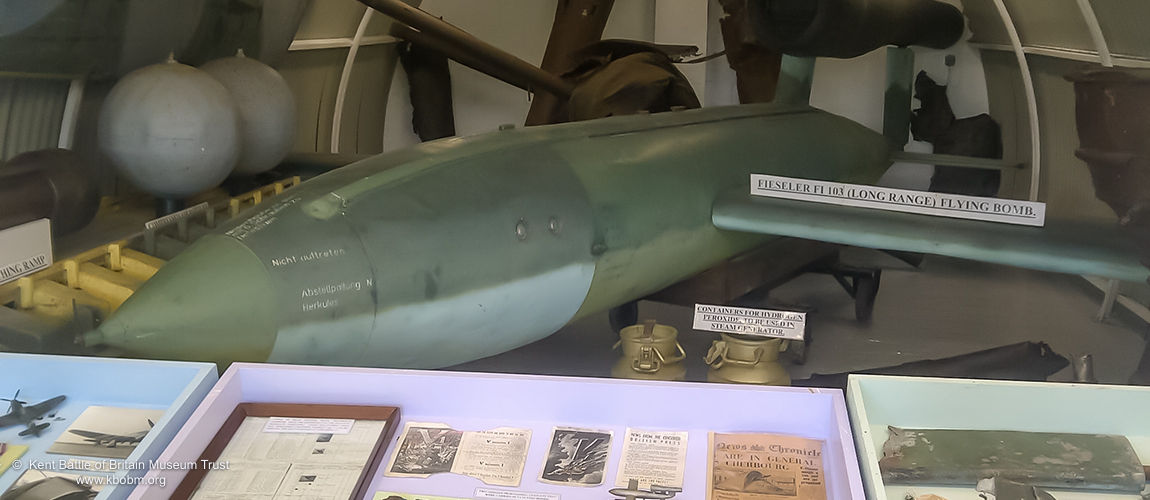The V-weapons Display
Building 4 is the original 1940 'B' Flight Dispersal Hut, which was formerly sited on the east side of the airfield by Killing Wood and used by the various squadrons active from the airfield at the time. The Museum moved it to its' present site in the mid-1980s, before the developers began construction on the airfield, in 1993.
On November 15th 1940, 'B' Flight of No.421 Flight moved to Hawkinge and occupied this hut. Their role was to patrol the coast and over the Channel at high altitude to identify specific types of enemy aircraft, their strengths and their tactics and therefore their likely targets. These types of patrols became known as 'Jim Crows'. No.421 Flight was brought up to strength and renumbered No.91 (Nigerian) Squadron on the 11th January 1941. The Squadron became famous for its' fighter sweeps over France, offensive night operations, ASR (Air Sea Rescue) searches and reporting and attacking shipping in the Channel.
The building now houses items from Hitler's "Vergeltungswaffen" programme, (his 'Retaliation' or 'Revenge' weapons.) The main item is a replica of a long range Fieseler Fi.103 V-I Flying Bomb (also commonly known at the time as 'Buzz Bombs' or 'Doodle Bugs' due to the sound of the Argus pulsejet engine.) This replica was built for the film 'Operation Crossbow'. Each bomb had a small, propeller like anemometer device on its nose that was connected to the bomb's autopilot. As the flying bomb flew through the air, its forward motion turned the propeller like a pin-wheel in the wind. After a pre-set number of revolutions, the propeller tripped the diving controls, pointing the bomb earthward at a steep angle. When the windmill device tilted the bomb toward the earth, all the fuel ran to one end of the tank, the end away from the fuel pump. The pump began drawing air, and the engine, cut off from its fuel supply, stopped running. The mechanism was set by the ground crew before launching; the setting of how many revolutions were needed to trip the dive controls was based upon calculations involving the flying bomb's speed and the distance to target.
The bomb carried its' 1,870 lbs. (848 kg) load of explosives at a speed of about 400 mph (640 k/hr.) and it consumed its' 80 octane fuel and air mix at about one gallon per mile (4.5 ltrs/1.6 kms). In effect, this bomb became the world's first guided missile, the first one landing in Kent in July, 1944, with final total in the U.K. being some 10,000 bombs.
One can also see a section of one of the original launching ramps, a launch piston, compressed air bottles, photographs and other items from both V1s and V2s, which exploded in S.E England in the summer of 1944.





